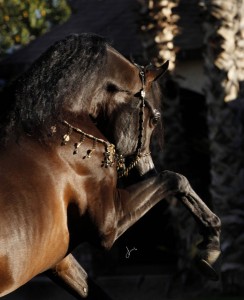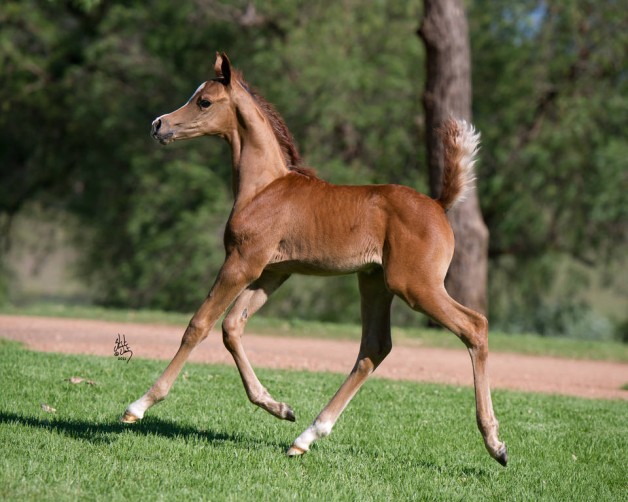By Robin Foster
While some coat colors are clearly linked to behavior, the evidence that chestnut horses are sensitive and hot-blooded is weak, if it exists at all.
I’ve been looking for a new horse and have fallen for a chestnut mare. My past horses have all been easy-going bays, and I was curious if chestnut mares are as hot-blooded as people claim.
Some coat colors are thought to reflect a horse’s temperament, including the belief that chestnut horses are sensitive and hot-blooded. This stereotype may be true, but the research is limited.
 Horse breeders have long been interested in coat colors, and some breed registries are based on color or pattern (e.g., Appaloosas, Buckskins, and Paints) or have color restrictions (e.g., Fresians).
Horse breeders have long been interested in coat colors, and some breed registries are based on color or pattern (e.g., Appaloosas, Buckskins, and Paints) or have color restrictions (e.g., Fresians).
The varied coat colors seen in horses are determined by eleven or more different genes. Two genes control the four basic coat colors—bay, brown, black, and chestnut. Other genes modify these basic colors, either by diluting them (producing cream, dun, buckskin, silver, champagne, palomino, and other colors), overriding their effects (producing gray or dominant white colors), or creating distinctive patterns of pigmented areas (producing tobiano, sabino, roan, and other patterns)1-2.
Importantly, the same genes that determine coat color also play a role in other biological processes that affect an animal’s physiology, behavior, neurologic function, and health3-5.
Only a few studies have looked at the connection between coat color and behavior in horses. One study published just this month6 found that, compared to bay horses, chestnut horses were bolder and more likely to approach unfamiliar objects and animals, but they were no more likely to have difficulties during training. Bolder chestnut horses might only seem fiery and hot-blooded because they put themselves into dangerous situations. Still, in this questionnaire-based study, breed, sex, and age were better predictors of behavior than color.
 Another study of Icelandic horses7 found some truth to the claim that silver colored horses are nervous, difficult to handle, and reactive to fearful stimuli. In this study, silver horses were more cautious in novel situations, but not more reactive in fearful situations, than other horses. One explanation was that the gene for silver coat color can also cause eye abnormalities and hearing impairment, so the cautious behavior might actually be due to these sensory problems.
Another study of Icelandic horses7 found some truth to the claim that silver colored horses are nervous, difficult to handle, and reactive to fearful stimuli. In this study, silver horses were more cautious in novel situations, but not more reactive in fearful situations, than other horses. One explanation was that the gene for silver coat color can also cause eye abnormalities and hearing impairment, so the cautious behavior might actually be due to these sensory problems.
Further, darker coat color has been linked to greater aggression, sexual activity, and resistance to stress in a wide range of animals5. For example, lions with dark manes are more aggressive. Light coloration has been linked with domestication and tameness. In horses, the light chestnut coat color is a result of domestication, and by extension chestnuts may be tamer than dark horses. Piebald coloration (patches of dark and white areas, as seen in Paint horses) has also been linked calm, docile behavior in dogs, cats, hamsters, rats, cows, birds, and horses.
The Bottom Line
The best practical advice in your situation is, don’t judge a chestnut horse by its color. While some coat colors are clearly linked to behavior, the evidence that chestnut horses are sensitive and hot-blooded is weak, if it exists at all. Like many stereotypes, this one may be subject to what psychologists call confirmation bias, meaning that people unconsciously remember examples of hot-blooded chestnut horses that support their existing belief, and discount examples of calm chestnuts and hot-blooded bays that don’t support their belief.




Color has ZERO, ZERO, ZERO, ZERO relationship to temperament!!!!